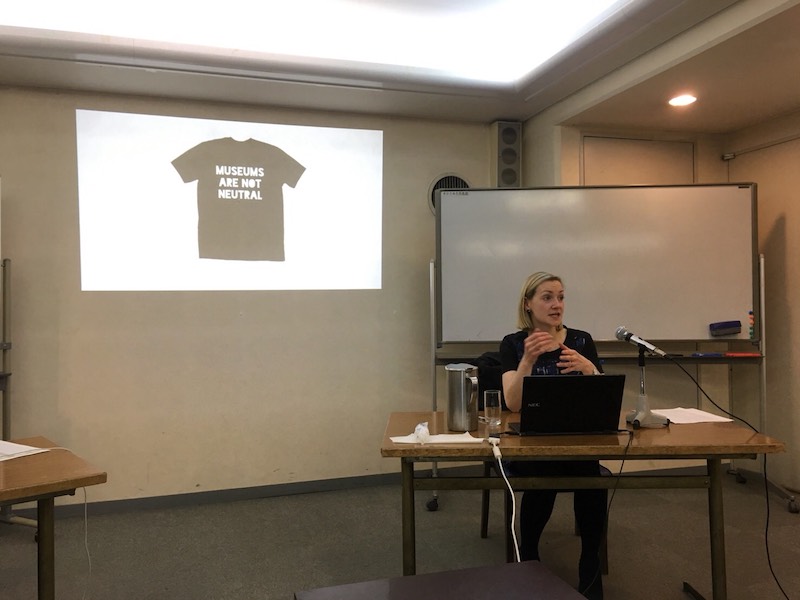- HOME
- Activities
- Forum List
- Forum Details
Febulary.8.2018 “The museum in the 21st century: Who is it for and Why does it matter?”
Ms. Roisin Inglesby, museum curator and independent scholar

Ms. Roisin Inglesby: A museum curator and independent scholar. She has a BA from the University of Oxford and an MA from the Bard Graduate Center, New York, where she studied the History of Design. She worked at the Victoria & Albert Museum in London for 5 years before joining Historic Royal Palaces as Curator of Drawings, based at the Tower of London. Since moving to Japan she works part time at the Tokyo Metropolitan Teien Museum in Meguro.
This forum fell into two parts. First part was about the speech of Ms. Roisin Inglesby and Q&A session about her speech. There were four topics in her speech “Who do history and culture belong to?”, “What kind of things should be exhibited in museums?”, "Who goes to museums?”, “Where should the money come from?”. Second half had the discussion whose title is “Should museums be free of charge?”. In this session, students discussed this issue.
Her speech started about the history of arts which were owned as private collections. In 1683, first museum opened in Oxford University, named Ashmolean Museum. In a few centuries, lots of museums have been established. Yet the arts have opened to the public, some issues didn’t disappear, because there were the problems of returning cultural properties. Large amount of exhibition came from the other place by looting or importing, so it’s hard to determine ownership. Furthermore, she talked about the critical cultural properties in the countries of under wartime like Syria, Egypt and Afghanistan. They sometimes lack of facilities to keep them safely and they have to choose whether to evacuate them outside the county or leave it to local people. We need to rethink about this ownership problem.
Secondly, she talked about exhibitions of museums. Not only the luxury arts or sculptures, but the commodities, like Hallo Kitty’s goods and Starbucks’ tumbler, also have a value of symbolizing our consumer culture. She told us that museums need to collect more various exhibits to provide opportunities to think about our society.
In the third topic, she talked about the people who visit museums and how to tell them the good points of museums. These days, museums try to make explanations for kids or allow photography in order to attract more people. Sometimes, museums improve the quality of exhibits and curator’s skills. Furthermore. museums started holding party and event at their museum building. Owing to their effort, the number of visitors is increasing in the UK.
Finally, she taught us about money problem, who should pay for and where it comes from. Museums have three sources of entrance fee, tax and donation. First problem is the relation between entrance fee and tax. Whether we recognize museums as public facilities like library or luxury facilities like movie cinema, significance of entrance fee will change. In the UK, more and more museums introduced free charge based to the former idea. Secondly big problem is donation from company like oil company. They usually try to restrict exhibitions in order to hide unfavorable things for their business. From the academic and public viewpoints it brings a big loss to our society. Therefore, museums in the UK try to eliminate such a dirty money to make pure and sustainable culture and historical place.
Based on her lecture, we discussed “Should museums be free of charge?” In case of normal exhibitions, from the view of public and their ownership, some agreed with free charge. On the other hand, from the view of sustainability and its aspects of luxury, others disagreed with the idea. In case of special exhibitions, most of us disagreed with free charge and the people who want to see the exhibits should pay money, because the term of special exhibitions and visitors are limited, and exhibitions requires large amount of expense such as transportation and personnel.
This was first KIP forum with art as a theme and we had a great opportunity to learn and think what the museums are. We are very grateful to Ms. Inglesby for this interesting lecture and discussion.
(Yutaro Shindo)


